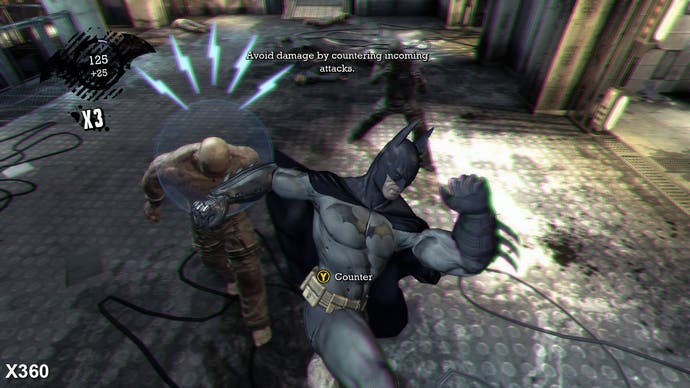TriOviz 3D joins Unreal Engine 3
But no word on Gears of War 3 3D.
Epic has announced that the TriOviz 3D system has been integrated into Unreal Engine 3, allowing all of its licensees the ability to add stereoscopic 3D modes to their games with only a minimal amount of extra development time.
TriOviz's technology is based on the concept of 2D plus depth, where individual viewpoints for each eye are separated out from a base 2D image based on the internal depth map used by the game engine in rendering the scene. The advantages of this style of 3D, also employed in a fashion in the forthcoming Crysis 2, is that the overhead for generating 3D is extremely small, meaning that developers effectively get a stereoscopic game mode with virtually no impact on gaming performance.
"It's not a panacea," Darkworks' Grady Hannah told Joystiq. "It integrates like a shader in the engine, but your artists still have to do work on it."
"If you want to make a game that's really fun and compelling in 3D, you have to think about 3D. Where the camera is all the time, how big a 3D effect you want. Like any other graphical feature you put in a game, you have to think about how you want to approach it," added Epic's Mark Rein.
Unreal Engine currently works with 3D Vision on PC, but in the Joystiq interview Rein hints that developers can port over 3D development work from there into the TriOviz system for consoles. The only downside to the announcement revealed thus far is that while the 3D implementation is built into UE3, it remains an additional licensing cost over and above the baseline UE3.


TriOviz has already been trialled in the Game of the Year edition of Batman: Arkham Asylum (detailed in-depth in a previous Digital Foundry article but the technology appears to have moved on somewhat from that first outing. TriOviz isn't just a paper glasses solution any more, but is fully compatible with proper 3DTVs while retaining its anaglyph-style support for conventional displays.
Rein also revealed a Dead Space demo where the HUD was correctly positioned in 3D space. This is more important as it sounds as 2D elements like this aren't present in the depth buffer - if you look at Batman GOTY, you can see that the HUD just sits there, sometimes interfering with the illusion of depth. It'll be interesting to see if other elements that aren't a part of the depth buffer (for example, particle effects) are also now correctly rendered in proper 3D. Readers of our original report will remember that this was one of the main problems of the TriOviz effect.
It's also worthwhile to remember that while 2D plus depth can produce an effective sense of stereoscopic 3D, it's not actually true 3D - based on a 2D image, there could well be blindspots in the image (think of standing at the edge of a wall where one eye only sees the wall, while the other can see beyond it). However, with true 3D titles often having performance issues, a low overhead solution like TriOviz could be very attractive.
Our performance analysis of Batman GOTY running in 2D and 3D modes showed just how well the system coped. Above you can see the 360 version running, while a PS3 equivalent is just a click away. The performance results are impressive and there's no reason to doubt that the full-on 3DTV modes would incur much in the way of additional overhead.
While publishers may still be wary of the take-up of 3DTVs, there's no doubt that prices are tumbling. Recently the DSG group were selling a 50" Samsung plasma with 3D capabilities, three pairs of glasses and a free Blu-ray player for less than £1,000. Lower prices combined with a proliferation of more content is the key for the format to gain traction and a simple, cost-effective approach for adding 3D to gaming could play an important part.
TriOviz won't be the ideal solution for every UE3 game - and Epic has yet to announce if it will support the tech in its own Gears of War 3 or Bulletstorm - but it's certainly a very promising addition to Epic's versatile middleware.







